Nyheter
Natural Resources by Van Eck
Publicerad
9 år sedanden
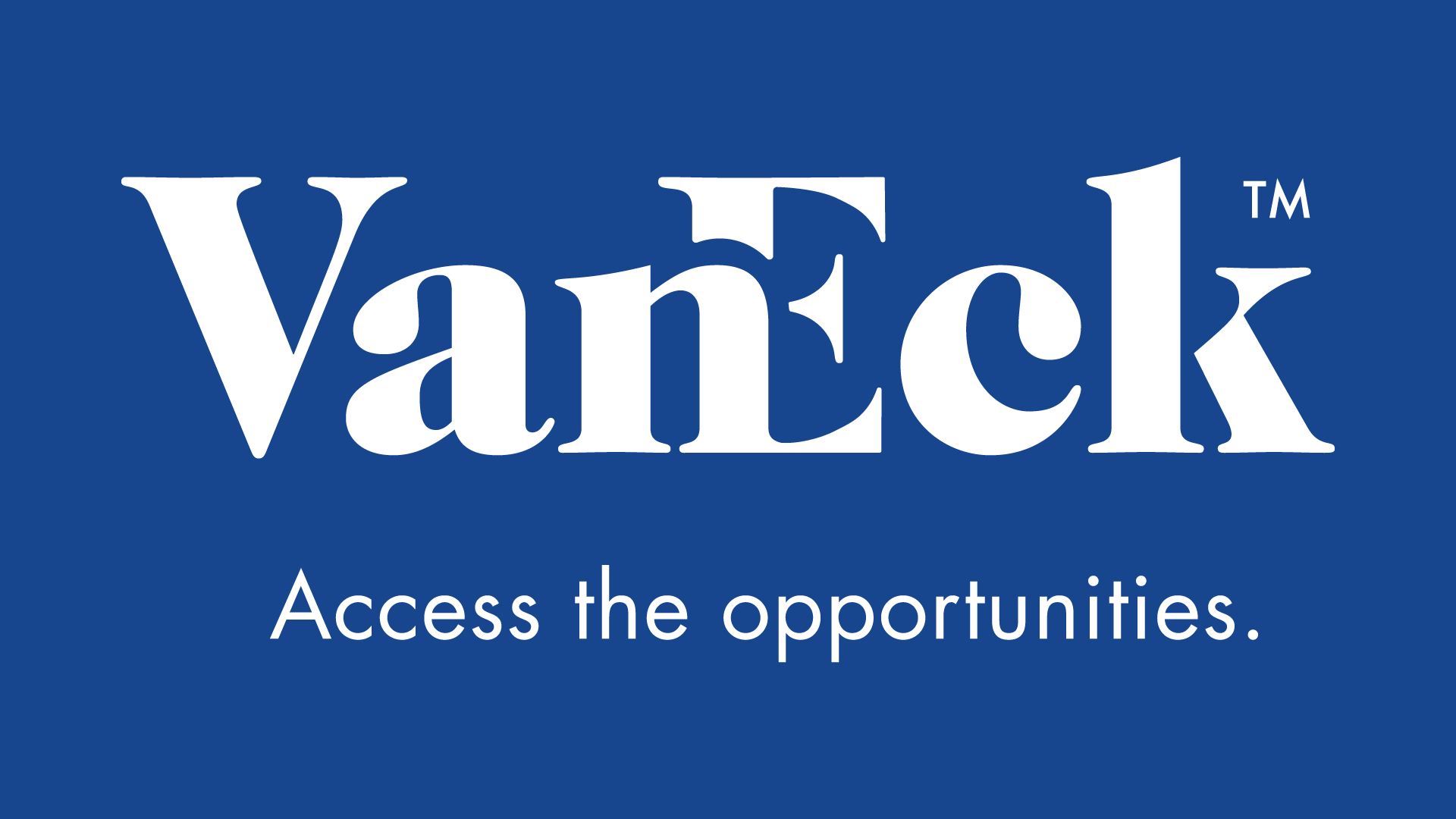
Oil Market’s Shifting Supply and Demand Fundamentals Natural Resources by Van Eck TOM BUTCHER: Shawn, thus far in 2016, have supply and demand fundamentals in the oil market shifted as you expected them to?
SHAWN REYNOLDS: We believe that there is no doubt that the oil market’s supply and demand fundamentals are coming into place and will tighten through the end of the year. However, we think the timing is unclear in terms of how fast or slow this will happen, but we are likely to see tightening later in the year. The biggest surprise has been the depth of the changes at hand, which have created a sense that tightening might happen quicker than expected; but in our opinion, tightening is certainly going to last for some time.
When we talk about the depth of changes, we refer to the rig counts here in the U.S., which have fallen 78%. That is unprecedented in the time that we have been counting rigs drilling in the U.S., which began in the 1970s. We also look at activity levels and investment levels overseas.
https://www.youtube.com/embed/7vEKHMjVq6s
Declining Rig Counts Across the Globe U.S. Count Down 78%
Source: Bloomberg, as of March 2016.
If we look more closely at integrated oil companies and consider that they cut capital investment plans by 25% in 2015, and are expected to cut another 25% in 2016, we again find that there has been no precedent. These developments have never been experienced in the history of the modern oil industry. While things are more or less playing out as we expected, there are certainly some surprises. They may be taking place slowly now, during the first part of the year, but they will likely speed up and endure for some time in terms of upside price correction.
BUTCHER: What might be some of the long-term effects of those capital investment cuts on the integrated oil companies?
Big Oil Projects Postponed or Canceled
REYNOLDS: It has been staggering to observe the reactions from the integrated companies. Obviously, many headlines focus on U.S. oil shale and the rig count reduction of 78%. If you dig into the volumes that are connected with these two major changes taking place, the E&P (exploration and production) companies and the integrated oil companies will not experience equivalent impact. The potential impact on the integrated oil companies will be significantly larger and longer term.
What do these reductions in capital investments entail? They mean big projects being canceled or postponed. If you add it all up, we’re looking at somewhere between 6-13 million barrels a day of projects being postponed or canceled. These projects were slated to take place between 2014 and 2020 and now they are off the shelf until post 2020, if at all.
We are seeing big projects being canceled by individual companies. For example, Petrobras [Brazil’s Petróleo Brasileiro S.A], or Royal Dutch Shell [Netherlands], or Chevron [U.S.], or Total [France]. Every single one of these multi-national companies is canceling major projects. For example, the French company Total has not approved any major projects in 2014 or 2015 and will likely not approve anything in 2016; and it has nothing on the docket for 2017. Royal Dutch Shell hasn’t approved anything since 2013, except for one project in the deepwater Gulf of Mexico.
Integrated Cos. Likely to Suffer Multi-Year Declines in Production
This activity is unprecedented, and we believe it sets up a situation where the oil production of integrated companies, which has grown slowly over the years but is still growing, will begin to decline. We expect a multi-year decline that may not begin until later in 2016 or perhaps early 2017. By late 2017, and certainly for several years thereafter, we are likely to see a very methodical decline in overall supply. This will heavily impact the overall oil market.
BUTCHER: For oil and gas exploration and production companies, what characteristics have enabled the successful ones to survive?
Geology, Technology, and a Healthy Balance Sheet are Critical
REYNOLDS: There are companies that are surviving and thriving. Identifying these strong companies is an important part of our process. We have always looked for a special set of characteristics that allows important and steady structural growth.
What specifically do we look for? We spend time identifying companies with the right acreage and the right geology. That’s something we do every day. We look at individual oil well results, and try to figure out what are the sweet spots for a given location. Sometimes consensus is that everybody knows exactly where the sweet spot is; but if you’re off by a few miles or a few counties, it can make a significant difference in who actually has the best rock. Therefore, we spend a great deal of time looking for the companies with the best rock. That is number one.
Technology Should be Part of the Company’s DNA
Number two is technology. The shale phenomenon in the U.S. is all about evolutionary technology and taking it step-by-step, tweaking small aspects of the technology in order to increase reserve bases, increase production rates, lower costs, and raise returns. We are always looking for companies that incorporate this process as part of its DNA or culture, and not something they’re just pulling off the shelf to try because it worked for someone else. It is the scientific culture at the heart of a company that is key in making shale production economic and taking it to the next step in terms of adding unexpected amounts of reserves.
Balance Sheet Strength Fosters Innovation
Number three is does the company have the balance sheet, the financial wherewithal to try different ideas? Obviously, if you are squeezed on your cash flow or your balance sheet is stretched, you are not willing or able to try different technologies or methods. You are not likely to risk trying something different and potentially see it fail, only to end up with a dry hole. That kind of outcome is really unacceptable, especially in this environment. But if you do have a strong balance sheet, you’re willing to try something new. We have always looked for this profile, and it is especially important in this environment. Last summer, balance sheets became even more critical, not only in terms of flexibility and the ability to try new technologies, but also in terms of simple survival. Can the company survive tough times when the price of oil is low?
The three characteristics we have always considered are the acid base or the geology, technology, and the balance sheet. This approach has paid dividends during this downturn and certainly in the early part of this year.
BUTCHER: Thank you.
by Shawn Reynolds, Portfolio Manager
Reynolds has more than 30 years of experience covering the energy sector. Before his career in finance, Reynolds worked as an exploration geologist and earned degrees in geology and engineering.
IMPORTANT DISCLOSURE
This content is published in the United States for residents of specified countries. Investors are subject to securities and tax regulations within their applicable jurisdictions that are not addressed on this content. Nothing in this content should be considered a solicitation to buy or an offer to sell shares of any investment in any jurisdiction where the offer or solicitation would be unlawful under the securities laws of such jurisdiction, nor is it intended as investment, tax, financial, or legal advice. Investors should seek such professional advice for their particular situation and jurisdiction. You can obtain more specific information on VanEck strategies by visiting Investment Strategies.
The views and opinions expressed are those of the speaker(s) and are current as of the posting date. Commentaries are general in nature and should not be construed as investment advice. Opinions are subject to change with market conditions. All performance information is historical and is not a guarantee of future results.
Please note that Van Eck Securities Corporation offers investment portfolios that invest in the asset class(es) mentioned in this post and video. You can lose money by investing in a commodities fund. Any investment in a commodities fund should be part of an overall investment program, not a complete program. Commodities are assets that have tangible properties, such as oil, metals, and agriculture. Commodities and commodity-linked derivatives may be affected by overall market movements and other factors that affect the value of a particular industry or commodity, such as weather, disease, embargoes or political or regulatory developments. The value of a commodity-linked derivative is generally based on price movements of a commodity, a commodity futures contract, a commodity index or other economic variables based on the commodity markets. Derivatives use leverage, which may exaggerate a loss. A commodities fund is subject to the risks associated with its investments in commodity-linked derivatives, risks of investing in wholly owned subsidiary, risk of tracking error, risks of aggressive investment techniques, leverage risk, derivatives risks, counterparty risks, non-diversification risk, credit risk, concentration risk and market risk. The use of commodity-linked derivatives such as swaps, commodity-linked structured notes and futures entails substantial risks, including risk of loss of a significant portion of their principal value, lack of a secondary market, increased volatility, correlation risk, liquidity risk, interest-rate risk, market risk, credit risk, valuation risk and tax risk. Gains and losses from speculative positions in derivatives may be much greater than the derivative’s cost. At any time, the risk of loss of any individual security held by a commodities fund could be significantly higher than 50% of the security’s value. Investment in commodity markets may not be suitable for all investors. A commodity fund’s investment in commodity-linked derivative instruments may subject the fund to greater volatility than investment in traditional securities.
Investing involves risk, including possible loss of principal. An investor should consider investment objectives, risks, charges and expenses of any investment strategy carefully before investing. No part of this material may be reproduced in any form, or referred to in any other publication, without express written permission of Van Eck Securities Corporation.
Du kanske gillar
-
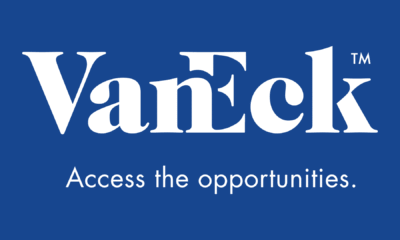

Are Gold Mining Equities Regaining Attention Amid Rising Gold Prices?
-
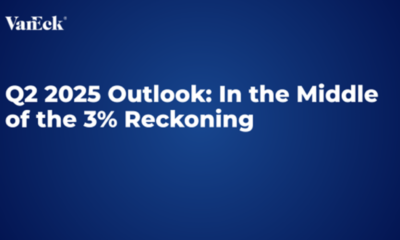

Q2 2025 Outlook: In the Middle of the 3% Reckoning
-
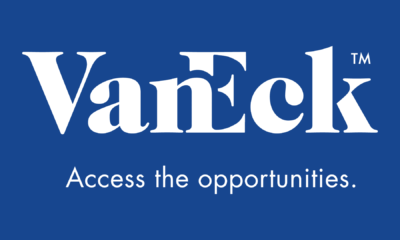

Deep Dive into Pyth Network
-
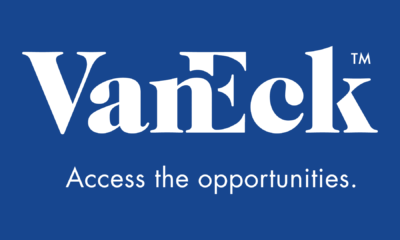

Deep Dive into Pyth Network
-


The Layer-1 Challengers: Why These Layer-1 Might Be the Real Ethereum Killers
-


Volatility Shares, VanEck och Grayscale vill starta terminsbaserad Ethereumfond
Nyheter
Are Gold Mining Equities Regaining Attention Amid Rising Gold Prices?
Publicerad
3 minuter sedanden
26 april, 2025
The investment environment in 2025 has been marked by increased uncertainty, including evolving trade dynamics involving the U.S. and rising geopolitical risks, which have weighed on overall market sentiment. Notably, though, gold has shone, surging past the symbolic $3,100 per ounce mark for the first time in history.
Gold has recently gained attention as investors seek potential hedges against rising inflation, currency fluctuations, and broader market volatility. Historical data suggests that both gold and gold mining equities have sometimes outperformed during periods of market stress, though such outcomes are not guaranteed and may vary depending on broader macroeconomic dynamics. The chart below displays historical episodes where gold and gold mining equities experienced relative strength during market corrections. However, such past performance should not be interpreted as a reliable indicator of future results.
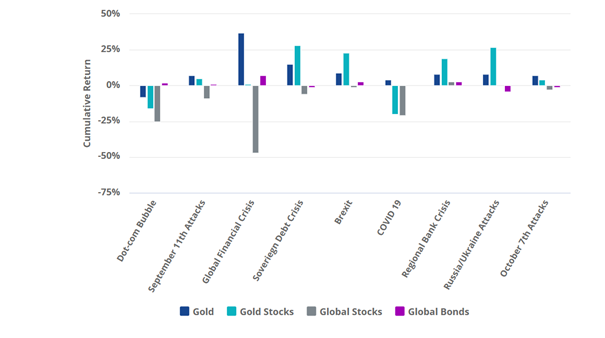
Source: VanEck, World Gold Council.
The early months of 2025 have seen a resurgence in gold mining stock interest, with the VanEck Gold Miners ETF (GDX) receiving significant capital inflows. These flows reflect changing investor sentiment but should not be viewed as a guarantee of future returns.
Improved management
While gold mining stocks are a play on the gold price, they are much more than that. In the past, gold mining companies indulged in wanton value destruction. During gold’s last bull market that ended in 2011, mining companies borrowed heavily to fund new developments and extract gold from low quality mines. After the gold price dropped, they were forced to announce write-downs.
But since then, they have learned to keep costs under control. Indeed, for more than 10 years gold mining companies’ costs have grown by far less than a gold price that’s at least doubled. Despite the sharp rise in gold prices, especially in post 2020, miners have lagged significantly, likely reflecting ongoing capital and operating challenges noted between 2011 and 2015. This divergence may suggest a potential value opportunity if mining equities eventually re-rate closer to gold’s performance. Nevertheless, this is an assumption and may not turn out to be true, as structural issues or market dynamics could continue to weigh on miners’ valuations.
Gold Miner Premium/Discount to Gold
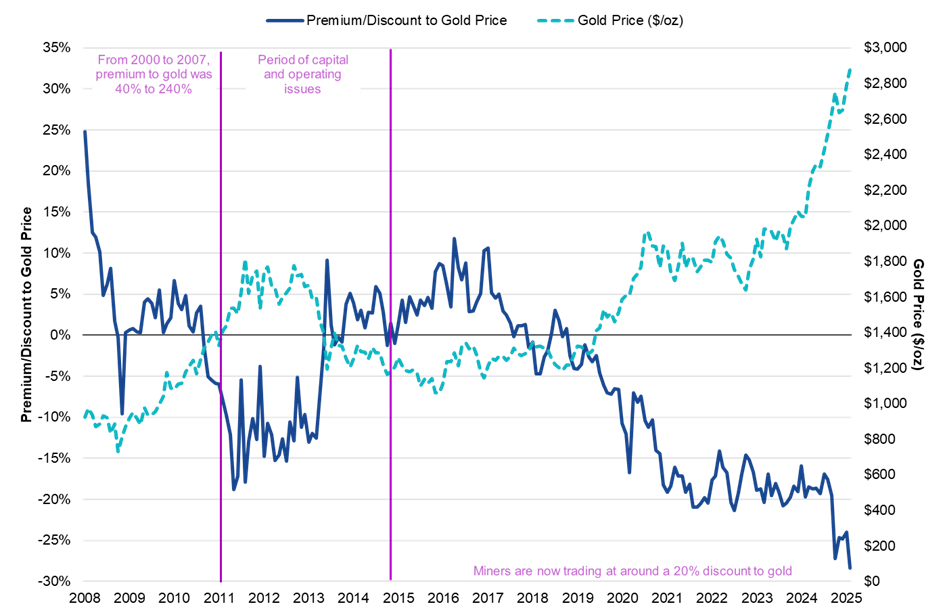
Source: Scotiabank. Data as February 2025.
Gold miners are expanding their profit margins, generating cash and embarking on share buy backs. What’s more, many have strong balance sheets. Yet still they trade at valuations below historical averages. Valuation metrics such as price-to-free cash flow (P/FCF) and price-to-earnings (P/E) ratios remain below the 12-month moving average.
Valuations are Still Below Long-Term Averages

Source: Morningstar data.
Gold miners differentiate from gold because they are operating businesses influenced by company-specific factors such as management decisions, production efficiency, regulatory environments, and geopolitical risks. While gold is a passive asset driven by macroeconomic trends, miners add an additional layer of exposure to operational performance and cost structures.
A supportive macro backdrop
The performance of gold mining stocks is naturally influenced by the trajectory of gold prices. From a macroeconomic standpoint, factors such as inflation concerns and central bank policies continue to shape a cautiously optimistic outlook for gold, although the asset remains subject to volatility. Central banks continue to be net buyers, with 2023 marking a record year in terms of official sector demand. This trend has extended into 2024 and early 2025, underscoring institutional confidence in gold as a long-term store of value.
At the same time, the unfolding trade war is contributing to a more volatile global environment. These developments could support the case for gold and, by extension, gold mining equities. Moreover, recent efforts to improve transparency around global gold reserves, including audits of holdings in Fort Knox and London, have added credibility to the market, potentially reducing the perceived risk premium for miners.
Valuable portfolio diversification
From an investor’s perspective, gold mining stocks can be a useful diversifier in a broader equity portfolio, especially at a time of uncertainty for equity markets. Historically, gold mining stocks have exhibited a high sensitivity to changes in the price of gold, sometimes outperforming the metal itself during prolonged bull markets. However, they also tend to underperform during downturns, reflecting their leveraged exposure to gold price movements. Past performance is not indicative of future results. The table below shows the low correlation of the two VanEck gold miners UCITS ETFs with the MSCI World Index of global stock prices. This low correlation suggests that gold mining ETFs may perform differently than global equities, potentially helping to reduce overall portfolio volatility during periods of market stress. That said, they also carry equity-like risks, and investors should assess their portfolio objectives and risk tolerance accordingly.
Low Price Correlations with Stocks
| Investment | MSCI World | Gold Price | VanEck Junior Gold Miners ETF | VanEck Gold Miners ETF |
| MSCI World | 1.00 | |||
| Gold Price | 0.10 | 1.00 | ||
| VanEck Junior Gold Miners ETF | 0.38 | 0.76 | 1.00 | |
| VanEck Gold Miners ETF | 0.31 | 0.81 | 0.96 | 1.00 |
Source: Morningstar data.
A better way to play the rally?
When the VanEck Gold Miners UCITS ETF was introduced in 2015, it aimed to provide investors with a way to gain diversified exposure to gold mining equities. Early performance was tempered by concerns related to past capital discipline within the sector. Recent inflows into ETF may reflect renewed investor interest, although sentiment toward mining equities can remain sensitive to market and operational developments.
As gold glitters at a time of market volatility, there are good reasons to think gold miners may be a better way to play the rally. It should however be noted that while gold prices and mining companies are closely linked, investing in miners introduces additional layers of risk and complexity and investors should consider all the risk factors before investing.
IMPORTANT INFORMATION
This is marketing communication. Please refer to the prospectus of the UCITS and to the KID/KIID before making any final investment decisions. These documents are available in English and the KIDs/KIIDs in local languages and can be obtained free of charge at www.vaneck.com, from VanEck Asset Management B.V. (the “Management Company”) or, where applicable, from the relevant appointed facility agent for your country.
For investors in Switzerland: VanEck Switzerland AG, with registered office in Genferstrasse 21, 8002 Zurich, Switzerland, has been appointed as distributor of VanEck´s products in Switzerland by the Management Company. A copy of the latest prospectus, the Articles, the Key Information Document, the annual report and semi-annual report can be found on our website www.vaneck.com or can be obtained free of charge from the representative in Switzerland: Zeidler Regulatory Services (Switzerland) AG, Neudtadtgasse 1a, 8400 Winterthur, Switzerland. Swiss paying agent: Helvetische Bank AG, Seefeldstrasse 215, CH-8008 Zürich.
For investors in the UK: This is a marketing communication targeted to FCA regulated financial intermediaries. Retail clients should not rely on any of the information provided and should seek assistance from an IFA for all investment guidance and advice. VanEck Securities UK Limited (FRN: 1002854) is an Appointed Representative of Sturgeon Ventures LLP (FRN: 452811), which is authorised and regulated by the Financial Conduct Authority (FCA) in the UK, to distribute VanEck´s products to FCA regulated firms such as Independent Financial Advisors (IFAs) and Wealth Managers.
This information originates from VanEck (Europe) GmbH, which is authorized as an EEA investment firm under MiFID under the Markets in Financial Instruments Directive (“MiFiD). VanEck (Europe) GmbH has its registered address at Kreuznacher Str. 30, 60486 Frankfurt, Germany, and has been appointed as distributor of VanEck products in Europe by the Management Company. The Management Company is incorporated under Dutch law and registered with the Dutch Authority for the Financial Markets (AFM).
”The MSCI information may only be used for your internal use, may not be reproduced or redisseminated in any form and may not be used as a basis for or a component of any financial instruments or products or indices. None of the MSCI information is intended to constitute investment advice or a recommendation to make (or refrain from making) any kind of investment decision and may not be relied on as such. Historical data and analysis should not be taken as an indication or guarantee of any future performance analysis, forecast or prediction. The MSCI information is provided on an “as is” basis and the user of this information assumes the entire risk for any use made of this information. MSCI, each of its affiliates and each other person involved in or related to compiling, computing or creating any MSCI information (collectively, the “MSCI Parties”), expressly disclaims all warranties (including, without limitation, any warranties of originality, accuracy, completeness, timeliness, noninfringement, merchantability and fitness for a particular purpose) with respect to this information. Without limiting any of the foregoing, in no event shall any MSCI Party have any liability for any direct, indirect, special, incidental, punitive, consequential (including, without limitation, lost profits) or any other damages. It is not possible to invest directly in an index.”
This material is only intended for general and preliminary information and shall not be construed as investment, legal or tax advice. VanEck (Europe) GmbH and its associated and affiliated companies (together “VanEck”) assume no liability with regards to any investment, divestment or retention decision on the basis of this information. The views and opinions expressed are those of the author(s) but not necessarily those of VanEck. Opinions are current as of the publication date and are subject to change with market conditions. Information provided by third party sources is believed to be reliable and have not been independently verified for accuracy or completeness and cannot be guaranteed.
VanEck Gold Miners UCITS ETF (the ”ETF”) is a sub-fund of VanEck UCITS ETFs plc, an open-ended variable capital umbrella investment company with limited liability between sub-funds. The ETF is registered with the Central Bank of Ireland, passively managed and tracks an equity index. Investing in the ETF should be interpreted as acquiring shares of the ETF and not the underlying assets.
VanEck Junior Gold Miners UCITS ETF (the ”ETF”) is a sub-fund of VanEck UCITS ETFs plc, an open-ended variable capital umbrella investment company with limited liability between sub-funds. The ETF is registered with the Central Bank of Ireland, passively managed and tracks an equity index. Investing in the ETF should be interpreted as acquiring shares of the ETF and not the underlying assets.
Investing is subject to risk, including the possible loss of principal. Investors must buy and sell units of the UCITS on the secondary market via a an intermediary (e.g. a broker) and cannot usually be sold directly back to the UCITS. Brokerage fees may incur. The buying price may exceed, or the selling price may be lower than the current net asset value. The indicative net asset value (iNAV) of the UCITS is available on Bloomberg. The Management Company may terminate the marketing of the UCITS in one or more jurisdictions. The summary of the investor rights is available in English at: complaints-procedure.pdf (vaneck.com). For any unfamiliar technical terms, please refer to ETF Glossary | VanEck.
No part of this material may be reproduced in any form, or referred to in any other publication, without express written permission of VanEck.
© VanEck (Europe) GmbH ©VanEck Switzerland AG © VanEck Securities UK Limited
Nyheter
Fem spanska fonder som har ökat med +12% under 2025
Publicerad
20 timmar sedanden
25 april, 2025
År 2025 visar sig bli ett tufft år för finansmarknaderna. Med det första kvartalet fortfarande att avslutat upplever de stora internationella aktieindexen kraftiga nedgångar, där indexfonder baserade på S&P 500 och Nasdaq-100 drabbas särskilt hårt. Det finns dock en kategori som står sig starkt: Ibex 35 indexfonder, som har blivit en av årets mest räddningsvärda tillgångar. Det finns fem spanska fonder som har ökat med +12% under 2025.
Mer specifikt har fonder som investerar i spanska aktier (både indexfonder och aktivt förvaltade) ackumulerat en genomsnittlig avkastning på 14,29 % hittills under 2025. Denna siffra gör kategorin till den mest lönsamma bland aktiefonder, och den näst mest lönsamma av alla investeringsfondkategorier, efter endast guld- och ädelmetallfonder, som har skjutit i höjden med en omvärdering på mer än 40 %.
Inom den spanska kategorin upplever Ibex 35 indexfonder en stark utveckling, med avkastning överstigande 12 % under 2025. Nedan granskar vi årets fem mest lönsamma Ibex indexfonder, rangordnade från lägst till högst avkastning:
BBVA Bolsa Índice FI
Denna Ibex 35 indexfond, som förvaltas av BBVA Asset Management, har stigit med 12,03 % hittills i år. Under de senaste 5 åren har den erbjudit en genomsnittlig avkastning på 16,12 %.
Den har tillgångar på 116,5 miljoner euro och följer Ibex 35 Net Return-indexet, vilket inkluderar utdelningar. Dess nuvarande kostnader är 1,21 %.
10 största portföljpositioner
| Värdepapper | Vikt% |
| Inditex (Industria de Diseño Textil S.A.) | 13,57% |
| Banco Santander S.A. | 13,16% |
| Iberdrola S.A. | 12,39% |
| BBVA (Banco Bilbao Vizcaya Argentaria S.A.) | 10,32% |
| CaixaBank S.A. | 5,36% |
| Amadeus IT Group S.A. | 4,57% |
| Ferrovial SE | 4,42% |
| Futuro sobre IBEX 35 | 3,75% |
| Aena SME S.A. | 3,60% |
| Telefónica S.A. | 3,40% |
Santander Indice España FI Openbank
Santander Asset Managements indexfond Ibex 35 har en avkastning på 12,08 % år 2025. Under fem år har den ackumulerat en avkastning på 16,20 %.
Den förvaltar tillgångar till ett värde av 961,7 miljoner euro, vilket gör den till en av de största fonderna i detta urval. Förvaltningsavgiften är 0,70 % och de löpande kostnaderna är 1,11 %.
10 största portföljpositioner
| Värdepapper | Vikt% |
| Inditex (Industria de Diseño Textil S.A.) | 14,18% |
| Iberdrola S.A. | 12,70% |
| Banco Santander S.A. | 10,82% |
| Futuro sobre Ibex 35 (venc. 02/2025) | 9,90% |
| BBVA (Banco Bilbao Vizcaya Argentaria S.A.) | 9,16% |
| Bono España 0,65% | 5,57% |
| CaixaBank S.A. | 4,84% |
| Amadeus IT Group S.A. | 4,60% |
| Ferrovial SE | 4,40% |
| Aena SME S.A. | 3,60% |
ING Direct Fondo Naranja Ibex 35 FI
Fondo Naranja Ibex 35 de ING, som förvaltas av Amundi Iberia, har hittills under 2025 haft en avkastning på 12,13 %. Under femårsperioden har den ackumulerat en avkastning på 16,31 %.
Denna fond har tillgångar på 268,4 miljoner euro och replikerar Ibex 35 Net Return. Förvaltningsavgiften är 0,99 % och de löpande kostnaderna är 1,1 %.
10 största portföljpositioner
| Värdepapper | Vikt% |
| Inditex (Industria de Diseño Textil S.A.) | 13,90% |
| Banco Santander S.A. | 13,48% |
| Iberdrola S.A. | 12,69% |
| BBVA (Banco Bilbao Vizcaya Argentaria S.A.) | 10,57% |
| CaixaBank S.A. | 5,49% |
| Amadeus IT Group S.A. | 4,68% |
| Ferrovial SE | 4,53% |
| Aena SME S.A. | 3,68% |
| Telefónica S.A. | 3,49% |
| Cellnex Telecom S.A. | 3,48% |
Caixabank Bolsa Índice España Estándar FI
Caixabank AM-fonden har hittills under 2025 redovisat en ökning på 12,23 %. Dess genomsnittliga avkastning under de senaste fem åren har varit 16,72 %.
Dess förvaltade tillgångar uppgår till 335,5 miljoner euro, och det motsvarar Ibex 35 Net Return. Din provision är i detta fall 1 % och dina nuvarande utgifter är 1,03 %.
10 största portföljpositioner
| Värdepapper | Vikt% |
| Iberdrola S.A. | 13,61% |
| Banco Santander S.A. | 13,28% |
| Inditex (Industria de Diseño Textil S.A.) | 12,13% |
| BBVA (Banco Bilbao Vizcaya Argentaria S.A.) | 10,22% |
| CaixaBank S.A. | 5,82% |
| Amadeus IT Group S.A. | 4,49% |
| Ferrovial SE | 4,25% |
| Aena SME S.A. | 3,68% |
| Telefónica S.A. | 3,49% |
| Cellnex Telecom S.A. | 3,28% |
Bindex España Índice FI
Och den mest lönsamma fonden bland de som är indexerade mot Ibex 35 år 2025 (även om vi talar om tiondelar och hundradelar jämfört med resten) är Bindex Spain Index, från BBVA Asset Management. Denna fond har hittills i år haft en avkastning på 12,35 % och en 5-årsavkastning på 17,35 %.
Med tillgångar på 146,4 miljoner euro har denna fond etablerat sig som det billigaste alternativet av de fem (förvaltningsavgift på 0,11 % och löpande kostnader på 0,14 %). Den replikerar också Ibex 35 Total Return.
10 största portföljpositioner
| Värdepapper | Vikt% |
| Inditex (Industria de Diseño Textil S.A.) | 13,62% |
| Banco Santander S.A. | 13,20% |
| Iberdrola S.A. | 12,43% |
| BBVA (Banco Bilbao Vizcaya Argentaria S.A.) | 10,35% |
| CaixaBank S.A. | 5,38% |
| Amadeus IT Group S.A. | 4,59% |
| Ferrovial SE | 4,44% |
| Aena SME S.A. | 3,61% |
| Telefónica S.A. | 3,42% |
| Cellnex Telecom S.A. | 3,41% |
Nyheter
ASRP ETF ett spel på medtech företag världen över
Publicerad
21 timmar sedanden
25 april, 2025
BNP Paribas Easy ECPI Global ESG Med Tech UCITS ETF EUR (ASRP ETF) med ISIN LU2365457410, försöker följa ECPI Global ESG Medical Tech-index. ECPI Global ESG Medical Tech-index spårar företag från utvecklade marknader över hela världen som är aktiva inom medicinteknikbranschen. Aktierna som ingår filtreras enligt ESG-kriterier (miljö, social och bolagsstyrning). De utvalda värdepapperen viktas lika i indexet.
Den börshandlade fondens (total cost ratio) uppgår till 0,30 % p.a. BNP Paribas Easy ECPI Global ESG Med Tech UCITS ETF EUR är den billigaste och största ETF som följer ECPI Global ESG Medical Tech-index. ETF:n replikerar det underliggande indexets prestanda genom full replikering (köper alla indexbeståndsdelar). Utdelningarna i ETFen ackumuleras och återinvesteras.
BNP Paribas Easy ECPI Global ESG Med Tech UCITS ETF EUR är en mycket liten ETF med tillgångar på 12 miljoner euro under förvaltning. Denna ETF lanserades den 10 december 2021 och har sin hemvist i Luxemburg.
Handla ASRP ETF
BNP Paribas Easy ECPI Global ESG Med Tech UCITS ETF EUR (ASRP ETF) är en europeisk börshandlad fond. Denna fond handlas på flera olika börser, till exempel Deutsche Boerse Xetra och Borsa Italiana.
Det betyder att det går att handla andelar i denna ETF genom de flesta svenska banker och Internetmäklare, till exempel DEGIRO, Nordnet, Aktieinvest och Avanza.
Börsnoteringar

Are Gold Mining Equities Regaining Attention Amid Rising Gold Prices?

Fem spanska fonder som har ökat med +12% under 2025

ASRP ETF ett spel på medtech företag världen över

Europafokuserade ETPer ser större andel av flödena under första kvartalet

JAAA ETF an aktiv satsning på säkerställda obligationer

Crypto Market Risks & Opportunities: Insights on Bybit Hack, Bitcoin, and Institutional Adoption

Montrose storsatsning på ETFer fortsätter – lanserar Sveriges första globala ETF med hävstång

Svenskarna har en ny favorit-ETF

MONTLEV, Sveriges första globala ETF med hävstång

Sju börshandlade fonder som investerar i försvarssektorn
Populära
-

 Nyheter4 veckor sedan
Nyheter4 veckor sedanCrypto Market Risks & Opportunities: Insights on Bybit Hack, Bitcoin, and Institutional Adoption
-

 Nyheter3 veckor sedan
Nyheter3 veckor sedanMontrose storsatsning på ETFer fortsätter – lanserar Sveriges första globala ETF med hävstång
-

 Nyheter4 veckor sedan
Nyheter4 veckor sedanSvenskarna har en ny favorit-ETF
-

 Nyheter3 veckor sedan
Nyheter3 veckor sedanMONTLEV, Sveriges första globala ETF med hävstång
-

 Nyheter3 veckor sedan
Nyheter3 veckor sedanSju börshandlade fonder som investerar i försvarssektorn
-

 Nyheter3 veckor sedan
Nyheter3 veckor sedanVärldens första europeiska försvars-ETF från ett europeiskt ETF-företag lanseras på Xetra och Euronext Paris
-

 Nyheter3 veckor sedan
Nyheter3 veckor sedanEuropeisk försvarsutgiftsboom: Viktiga investeringsmöjligheter mitt i globala förändringar
-

 Nyheter2 veckor sedan
Nyheter2 veckor sedan21Shares bildar exklusivt partnerskap med House of Doge för att lansera Dogecoin ETP i Europa




